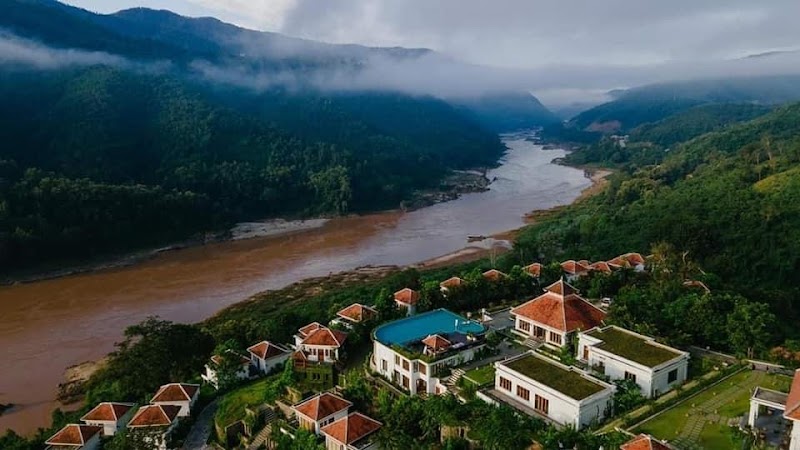
Bloom and Adventure at Mae Fah Luang Flower Festival in Chiang Rai
Experience the vibrant Mae Fah Luang Flower Festival in northern Thailand’s Chiang Rai, where rare blooms meet invigorating mountain trails. This annual December event blends natural beauty with manageable hikes, perfect for adventurers seeking color and culture in equal measure.
Wear sturdy hiking shoes
Paths combine dirt, rock, and occasional slippery patches near streams, demanding shoes with good grip and ankle support.
Hydrate frequently
Mountain air can be deceptively dry; carry at least 1 liter of water to stay balanced throughout your visit.
Start early to avoid crowds
Morning visits offer softer light and cooler temperatures, making for a more comfortable and immersive experience.
Respect local customs and flora
Engage with hill tribe exhibits thoughtfully and avoid stepping on or picking flowers to preserve the festival’s integrity.
Bloom and Adventure at Mae Fah Luang Flower Festival in Chiang Rai
The Mae Fah Luang Flower Festival bursts into life every December in Mae Fa Luang, Chiang Rai Province, inviting adventurers and flower enthusiasts alike to explore vibrant displays of rare blooms against a backdrop of northern Thailand's rugged mountains. This festival is not just a celebration of flora but also an invitation to engage with a landscape that defies stillness — the wind teases petals, and mountain air insists you breathe deeper.
Set at an elevation of roughly 1,000 meters, the festival grounds spread out over the expansive Doi Tung Royal Villa gardens, where thousands of flowers—such as orchids, rhododendrons, and sunflowers—dare to outshine the clouds drifting across the hills. The walkways wind through terraced flower beds and native forest patches that stand fiercely green, offering shaded relief and the fresh scent of earth and pine.
Visitors often start their hike from the Doi Tung Development Project center, where signage points out trails ranging from gentle strolls to moderately demanding climbs of roughly 3 kilometers with an elevation gain near 150 meters. The paths are a mix of dirt and stone, rugged enough to demand solid footwear but inviting enough for casual explorers. As you ascend, the forest becomes a lively companion—birds dart through branches, while small streams challenge your footing with the promise of cool relief. The summit rewards efforts with sweeping views of the Mae Fa Luang valley below, a reminder that this festival is a dance between cultivated beauty and wild terrain.
Timing your visit is crucial. Early mornings offer soft sunlight that highlights subtle hues on petals, while the afternoon sun brings warmth—ideal for lingering by flower beds but demanding hydration.
Preparation tips include sturdy hiking shoes with good traction to handle uneven, sometimes slippery terrain, and a reusable water bottle as natural water sources are off-limits. Dress in layers; mountain weather shifts quickly, moving from sharp chill to sun-drenched warmth in hours.
The festival itself presents more than flowers—a cultural showcase of local hill tribe crafts and traditional music. Engaging with these elements provides deeper insight into the community’s relationship with the land they steward fiercely.
For adventure seekers, the flower festival is both a visual feast and a practical challenge in comfortable hiking, a chance to meet a mountainside that's both tender in bloom and untamed in spirit. Approach it ready, stay curious, and let the festival's vitality draw you through its colors and contours.
Nearby Trips
All Adventures
Boat Charters
Water Activities
Adventures near Mae Fa Luang, Chiang Rai Province
Discover the unique and memorable adventures that make Mae Fa Luang, Chiang Rai Province special.
Frequently Asked Questions
When exactly does the Mae Fah Luang Flower Festival take place?
The festival is held annually over four days in early December, coinciding with the cool season when most flowers are in full bloom.
Is hiking required to enjoy the festival?
While some gentle walking is needed to explore the extensive gardens and trails, the paths are well-maintained and accessible to most visitors, making it suitable for casual walkers and moderate hikers.
Are there any entrance fees for the festival?
Yes, a modest entrance fee is charged to support the Doi Tung Development Project that maintains the area; prices are reasonable and support conservation and local communities.
What unique local wildlife might I see during the festival?
Keep an eye out for native bird species such as the Asian Koel and various sunbirds, which actively pollinate flowers. Small mammals and butterflies also animate the festival environment.
Are there accessibility options for visitors with limited mobility?
While some areas feature paved paths, the terrain becomes uneven beyond main exhibition zones. Assistance may be available at the main entrance, but full trail access is limited.
Can I buy local handicrafts at the festival?
Yes, numerous stalls operated by local hill tribe communities offer woven textiles, silverware, and handmade souvenirs, enriching the cultural side of the visit.
Recommended Gear
Hiking shoes
Provide traction and ankle support needed on mixed terrain.
Water bottle (min 1L)
Essential for hydration in dry mountain air.
Layered clothing
Protects against morning chill and midday sun.
Sun hat and sunscreen
Necessary for UV protection during open stretches.
Local Insights
Hidden Gems
- "Small viewing platforms along the northern trail offer quieter spots for flower and valley views often missed by crowds."
- "The ‘Orchid Pavilion’ showcases rare species cultivated locally, with occasional expert talks during the festival."
Wildlife
- "Sunbirds and bulbuls that dart among flowers, adding movement to still petals."
- "Sizable butterflies like the Rajah Brooke that patrol the garden edges."
History
"The festival is anchored in the Doi Tung Development Project, initiated by the late Princess Mother to improve local livelihoods and environmental conservation throughout the region."
